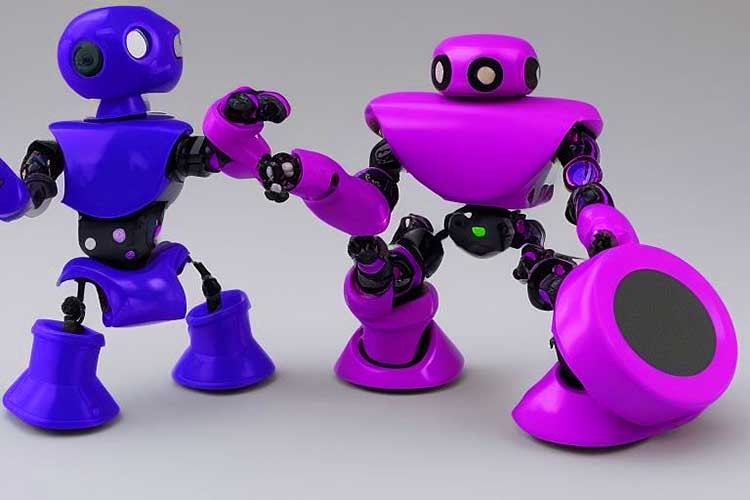
Claude 2.1 is a large language model from Anthropic that offers a number of benefits, including:
- Improved accuracy: Claude 2.1 has a 200,000-token context window, which means it can process up to 150,000 words of text at once. This allows it to better understand the context of a conversation and provide more accurate responses.
- Reduced hallucination rates: Claude 2.1 has been trained on a dataset of text and code that is both larger and more diverse than the dataset used to train its predecessor, Claude 2.0. This has led to a significant reduction in the rate of hallucinations, which are errors that the model makes when it generates text that is not consistent with the input text.
- System prompts: Claude 2.1 can now generate system prompts, which are messages that guide the user through a conversation. This can be helpful for users who are not familiar with using large language models.
- Tool use: Claude 2.1 can now be used with a variety of tools, such as Google Search and Wikipedia. This allows users to access information more easily and efficiently.
- Reduced refusals: Claude 2.1 is less likely to refuse to answer a question than its predecessor. This is because it has been trained on a dataset of text and code that includes a wider range of prompts and questions.
- Early support for tool integration: Claude 2.1 is able to integrate with a number of tools, such as Google Search and Wikipedia. This allows users to access information more easily and efficiently.
- 50%+ accuracy gains: Claude 2.1 has been shown to be more accurate than its predecessor, Claude 2.0, on a variety of tasks. This is because it has been trained on a dataset of text and code that is both larger and more diverse.
Here’s more detailed information:
Improved Accuracy
Claude 2.1’s 200,000-token context window allows it to process and understand a much larger amount of text than previous versions of the model. This means that it can better grasp the context of a conversation and provide more accurate and relevant responses. For instance, if you ask Claude 2.1 a question about a specific character in a novel, it can access and process information about that character from throughout the entire book, rather than just relying on the most recent sentence or paragraph. This leads to a more comprehensive and informative response.
Reduced Hallucination Rates
Hallucinations, or errors in generated text, are a common challenge for large language models. Claude 2.1’s training on a larger and more diverse dataset of text and code has significantly reduced the occurrence of hallucinations. This is because the model has been exposed to a wider range of language patterns and styles, making it less likely to produce nonsensical or irrelevant text. This improvement in reliability makes Claude 2.1 a more trustworthy and dependable language model.
System Prompts
System prompts are messages that guide the user through a conversation, helping them to better interact with the language model. Claude 2.1’s ability to generate system prompts makes it more user-friendly, especially for those who are not familiar with using large language models. These prompts can provide suggestions for topics of conversation, clarify instructions, or offer feedback on the user’s input. This increased user-friendliness makes Claude 2.1 more accessible and versatile.
Tool Use
Claude 2.1’s ability to integrate with various tools, such as Google Search and Wikipedia, expands its capabilities and makes it a more powerful tool for information retrieval and task completion. For example, if you ask Claude 2.1 a question about a scientific concept, it can not only provide you with its own understanding of the concept but also access and summarize relevant information from Wikipedia or other online sources. This integration with external tools enhances Claude 2.1’s ability to provide comprehensive and informative responses.
Reduced Refusals
Claude 2.1 is less likely to refuse to answer a question than its predecessor. This is because it has been trained on a dataset of text and code that includes a wider range of prompts and questions. As a result, it is better equipped to handle a variety of requests, even those that are ambiguous or challenging. This reduced tendency to refuse questions makes Claude 2.1 a more helpful and versatile language model.
Early Support for Tool Integration
Claude 2.1’s early support for tool integration allows developers to start building applications and tools that leverage its capabilities. This early access to the model’s functionality encourages innovation and collaboration, leading to the development of new and valuable tools that can enhance Claude 2.1’s usefulness and impact.
50%+ Accuracy Gains
Claude 2.1 has demonstrated significant accuracy gains compared to its predecessor, Claude 2.0, across various tasks. This improvement in accuracy is attributed to its training on a larger and more diverse dataset of text and code. The model’s ability to process and understand more complex and nuanced language has led to more precise and reliable responses in a variety of contexts.
In summary, Claude 2.1 represents a significant advancement in large language model technology, offering improved accuracy, reduced hallucination rates, user-friendly system prompts, tool integration capabilities, reduced refusals, early support for tool development, and substantial accuracy gains. These benefits make Claude 2.1 a more powerful, reliable, and versatile language model, opening up new possibilities for its application in various domains.
Overall, Claude 2.1 is a significant improvement over its predecessor. It offers a number of benefits, including improved accuracy, reduced hallucination rates, system prompts, tool use, reduced refusals, early support for tool integration, and 50%+ accuracy gains.
 Our company was established
in 2004.
Our company was established
in 2004.